SASKATCHWAN
Society

Society
Popular destinations CANADA
| Alberta | British columbia | Manitoba |
| New brunswick | Newfoundland and labrador | Northwest territories |
| Nova scotia | Nunavut | Ontario |
| Prince edward island | Quebec | Saskatchwan |
| Yukon |
Society
State Structure
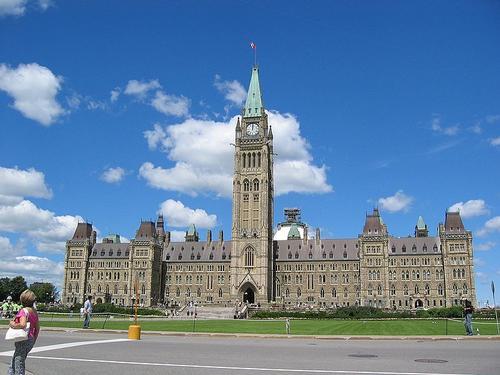
The ten provinces of Canada and three territories are part of a federation whose parliamentary form is parliamentary democracy. Canada is an independent constitutional monarchy within the Commonwealth and, following the British (Westminster) model, includes a Crown, a Senate and a House of Commons. The British king or queen is represented by a governor-general appointed for 5-7 years, who is assisted by a cabinet, the so-called "privy council". The Governor-General appoints and dismisses ministers and members of the federal Supreme Court and ratifies legislation, has consultation rights in the cabinet and delivers the speech from the throne. The largest political party provides the prime minister and ministers, who are elected from among the members of parliament. The prime minister is the most important person for the administration of the country.
In 1982, a constitutional amendment was made (Constitation Act 1982) that gave the Canadian parliament the power to make changes to the constitution itself without prior permission from the British parliament. Amendments to the Constitution require a decision by the federal parliament and by seven provinces (together more than 50% of the population). Regional representation is in place in the Senate and its 105 members are appointed by the Prime Minister, as in Britain. The political weight of the Senate is relatively small because the government decides on the candidacy of the senate members. Moreover, the Canadian cabinet is only accountable to the House of Commons, not to the Senate. The Senate is mainly concerned with amending legislative proposals.
The distribution of the 301 House of Commons seats is also provincial and is adjusted every ten years with each census. The members are elected by universal suffrage for five years and each represent a constituency ("ridings"). There is active voting right from the age of 18.
The state structure has a federal structure; Each province has its own Constitution, a Lieutenant Governor appointed by the Governor General, nominated by the Federal Cabinet, and a unicameral legislative assembly.
The territories are controlled by a "commissioner". This government official is accountable to the Canadian Department of Indian Affairs and Northern Development. This "commissioner" is assisted by a "Territorial Council", whose members are elected every four years by the residents of the territories entitled to vote. This board has the same function as the legislative assembly in the provinces. The territories are each represented by an elected Member of Parliament in the Federal House of Commons in Ottawa. The federal authority still manages finances, transport, economics, justice, defense and foreign affairs.
In Francophone Québec there is a strong secession movement. Since 1981, the Québécois have had two referendums on whether the province should secede and two times have voted against, although by a minority majority. In 1995 there was a very narrow majority of 50.3%, or 50,000 votes.
The federal government wants to take the wind out of the sails of the separatists through political and legal means. Legally, the federal Supreme Court has been asked whether the secession of Quebec is constitutionally permitted. The ruling in 1998 did not provide an unambiguous answer: unilateral separation of Quebec from Canada is not justified, but in the event of the wish of a 'large majority' of the people of Quebec, negotiations should be started to amend the constitution so that independence is possible.
Since 1995 support for separatism has declined somewhat, surveys show that most Québecois want to stay with Canada, but want a government that gains more power. It looks like a new referendum will not take place for the time being.
Legally, Canada is quite complicated. Statutes issued by the federal parliament are valid across the country; laws of the provincial legislator apply only in the relevant province. That is why there are major differences in laws and regulations from province to province - insofar as they concern matters that fall under the province's powers. Criminal law is a federal matter and therefore the same throughout Canada. For the current political situation, see chapter history.
Administrative division
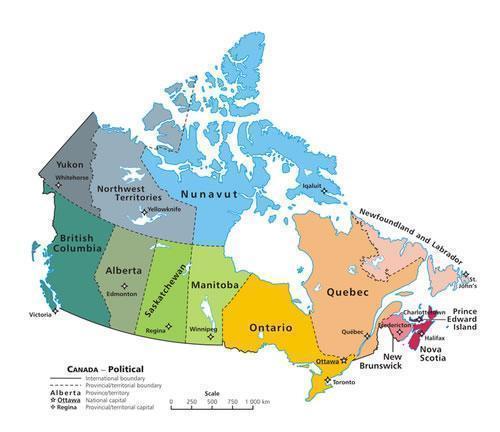
Since 1999, Federated Canada (established on July 1, 1867) has consisted of ten provinces and three territories. Each province has a high degree of autonomy, which is reflected, among other things, in the power to regulate the local administration itself. Furthermore, it is largely independent in areas such as prison, education, health care and taxation. The Crown is represented in each of the provinces by a Lieutenant Governor.
| Province / Capital | Area | Inhabitants |
| Alberta / Edmonton | 948.000 km2 | 3.113.600 |
| British Columbia / Victoria | 661.200 km2 | 4.141.300 |
| Manitoba / Winnipeg | 650.000 km2 | 1.150.800 |
| New Brunswick / Fredericton | 73.500 km2 | 756.700 |
| Newfoundland & Labrador / St. John’s | 406.000 km2 | 531.600 |
| Northwest Territories / Yellowknife | 3.300.000 km2 | 41.400 |
| Nova Scotia / Halifax | 55.000 km2 | 944.800 |
| Nunavut / Iqaluit | 1.900.000 km2 | 28.700 |
| Ontario / Toronto | 1.070.000 km2 | 12.068.300 |
| Prince Edward Island / Charlottetown | 5.657 km2 | 139.900 |
| Québec / Quebec City | 1.650.000 km2 | 7.455.200 |
| Saskatchewan / Regina | 651.900 km2 | 1.011.800 |
| Yukon Territory / Whitehorse | 536.000 km2 | 29.900 |
Education
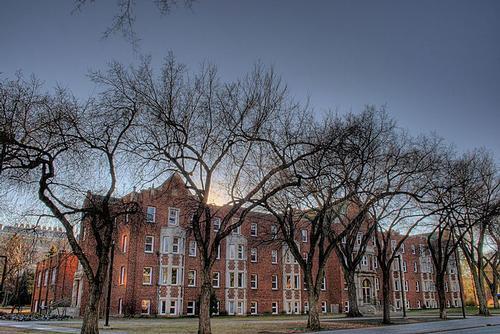
There is no general public education in Canada. Up to and including higher professional education, education is provided separately in each province. The provinces delegate responsibility for primary and secondary education to the locally elected or appointed administrations of public schools.
Children can start their educational careers in kindergarten or "kindergarten". When the children are six years old, they go to elementary school, the elementary school, where they spend six or seven years. Then they go to secondary education, the "high schools", or to lower technical, trade and other vocational schools. You can be admitted to higher or tertiary education with a high school diploma and after taking a few university entrance exams.
Higher education (often called "lectures") begins with an undergraduate program of at least four years, whereby one can obtain a so-called "bachelor's degree". After about two years, the "graduate" program leads to the 'master's degree' (doctoral student, master of law or engineer / Ir. Just like in the Netherlands, a doctoral degree is only obtained with a dissertation. Doctor of Philosophy, Ph.D., a title that dates back to the Middle Ages when philosophy was called the 'king of sciences'.
Economy
General
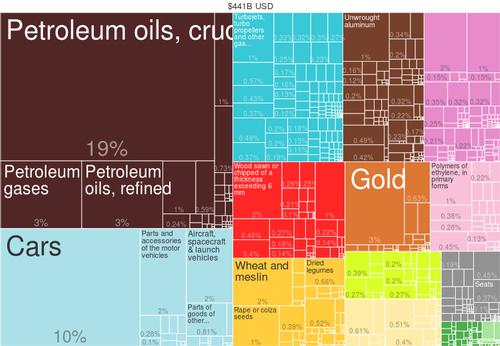 Export CanadaPhoto: The Atlas of Economic Complexity CC 3.0 Unported no changes made
Export CanadaPhoto: The Atlas of Economic Complexity CC 3.0 Unported no changes made
Canada has a highly developed industrial market economy, which is strongly export oriented and closely linked to the economy of the United States. With a gross national product (GDP) per capita of $48,300 (2017), Canada ranks among the wealthiest countries in the world.
In less than half a century, Canada has transformed from a country predominantly dependent on agriculture, forestry and fur trade into one of the most important industrialized countries in the world. In addition, many resources and resources are not yet available.
Most of the Canadian economic activity, like the population, can be found in a strip of about 160 kilometers wide along the border with the United States. The industry is mainly concentrated in the central provinces of Ontario and Québec and in the western provinces of British Columbia and Alberta. The province of Ontario is the center of the Canadian economy due to its large industrial concentration and large agricultural sector, while Toronto is the financial center of Canada. The Atlantic provinces are mainly oriented towards fisheries and agriculture, Saskatchewan and Manitoba are mainly oriented towards agriculture.
The enormous capital required for this is largely covered by the United States; almost all non-agricultural economic activities are financed by the wealthy southern neighbor.
The Canadian government and the Bank of Canada have pursued tight monetary policies for years, aimed at promoting price stability and keeping inflation under control. Due to the low and stable inflation, people are able to maintain the monetary value, which leads to an increase in the standard of living.
What also hinders national economic policy is the great degree of independence of the individual provinces, which have powers in the field of wage and price development and taxation.
In 2017, about 76% of the workforce was employed in the services sector, 19.0% in industry, and only 2% in the agricultural sector.
Agriculture
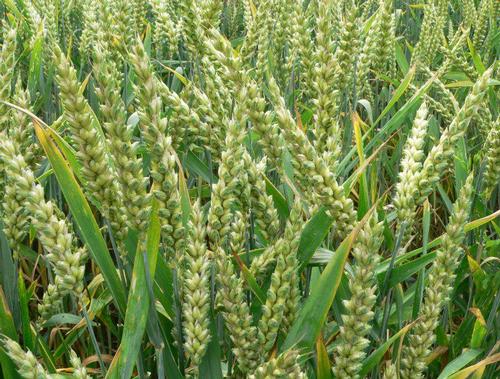 Canada WheatPhoto: Akshay.paramatmuni1987 CC 3.0 Unported no changes made
Canada WheatPhoto: Akshay.paramatmuni1987 CC 3.0 Unported no changes made
The economic importance of agriculture has declined drastically in the past few decades, and now amounts to approximately 2% of GDP. The highly mechanized sector produces for the domestic market and increasingly for exports.
Canada has approx. 280,000, often large farms (average 247 ha), which use approx. 8.5% cultivated land. Since the 1980s, total production, which increases by approximately 2.5% annually, has intensified further; fewer farms with more and more land The main agricultural areas are located in the provinces of Alberta, Saskatchewan and Manitoba. Other areas of high agricultural activity include Southern Ontario, Southern Quebec, the mountain valleys of British Columbia, and the Atlantic provinces.
The most important product is still wheat, largely from the prairie provinces mentioned above. About 75% of the wheat produced there is exported. Other important products are: oats, barley, mixed grains, corn (especially in Ontario), rye, potatoes, oilseeds such as flax and rapeseed, and to a much lesser extent legumes, sugar beets, vegetables, tobacco (Ontario), feed grains and fruits.
Federal and provincial governments provide support to agricultural businesses in almost every field, including through irrigation works, research, measures to promote price stability, and the provision of favorable credits.
Animal husbandry
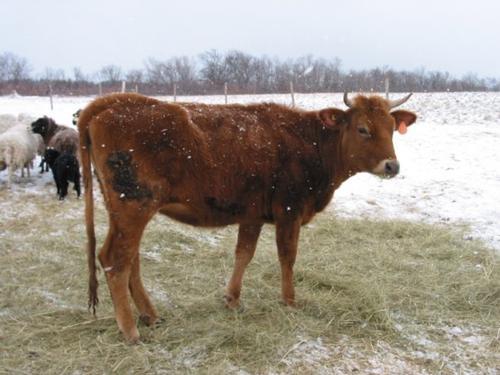
The Canadienne, also known as Black Canadienne, French Canadienne, or Black Jersey, is the only cow type bred in Canada. This type of cow dates back to the 16th century, when French colonists transported livestock to Canada from France. The Canadians remained the most used cow species in Canada until the late 19th century. After that, other species, such as the Hereford and the Holstein, began to displace the Canadienne from the scene.
Although the Canadienne can still be found all over Canada, the species is becoming increasingly rare and can only be found on a larger scale in the province of Quebec. Breeding organizations and the Quebec have in recent years made every effort not to let the species go extinct.
Areas with highly developed livestock farming are Ontario and Quebec, where the greater population density offers outlets for meat and dairy products. However, beef cattle breeding largely takes place in Alberta and Saskatchewan. Animal husbandry is the largest source of income for the Canadian agricultural sector, with cattle trade accounting for over 40% of sales. Cattle and pig farming are mainly focused on the export of animals, while the production of dairy farming is much more focused on the domestic market. Cattle farming is mainly concentrated in Alberta, the dairy industry and pig breeding in Ontario and Québec.
Fisheries
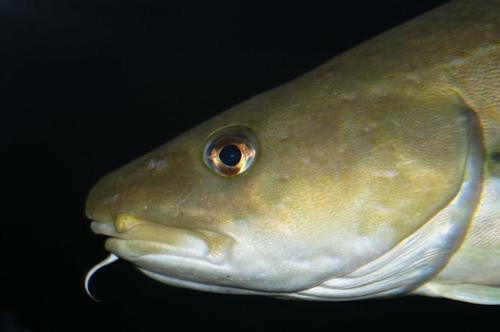 Cod CanadaPhoto:Patrick Gijsbers CC 4.0 International no changes made
Cod CanadaPhoto:Patrick Gijsbers CC 4.0 International no changes made
In the mid-1980s, fisheries employed, apart from the fish processing industry, around 60,000 professional fishermen, two thirds of whom work on the Atlantic coast and around 20% on the west coast; approx. 5% fish in inland waterways. The Atlantic coast with important fishing grounds such as the Newfoundland Bank provides almost 70% of the total fish production, the Pacific coast more than 20% of this and the inland fishing mainly on the Great Lakes and Manitobamers about 10%.
The most commonly caught species are cod and herring on the Atlantic coast, salmon on the Pacific coast, perch, sturgeon and trout. Overfishing has put pressure on catches.
Fur hunting
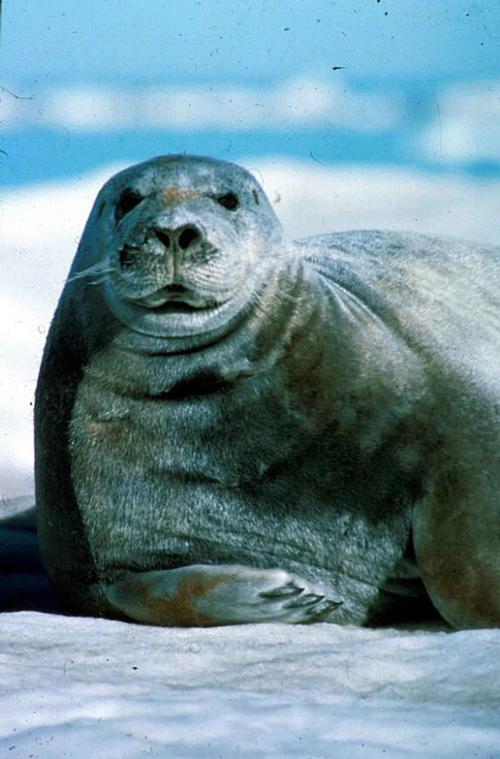 Atlantic seal CanadaPhoto: Public domain
Atlantic seal CanadaPhoto: Public domain
Hunting fur animals has long been Canada's largest economic resource. However, economic hunting (kicks) is increasingly being abandoned in favor of the much more lucrative breeding of fur animals on farms, mainly in Southern Canada. The farms mainly produce mink, chinchilla and silver fox fur.
The main hunted fur animals are beavers, lynxes, bisam rats, foxes, squirrels, otters, martens and seals. Seals have declined in the early 1980s, partly as a result of a European boycott. In 1987, the government ended the highly controversial hunt for young seals. However, the hunt for older animals continues unabated.
Forestry
Approx. 45% of Canada is covered by forests (400 million ha), which form an approx. 1000 to 2000 km wide belt from the east to the west coast. This is 10% of the world's forests. This enormous area consists mainly of different types of softwood and is approximately 70% exploitable. Canada is the largest exporter of timber and timber products. The forestry sector and employs approximately 35,000 people.
Sources
Elmar Landeninformatie
Wikipedia
CIA - World Factbook
BBC - Country Profiles
Copyright: Team The World of Info